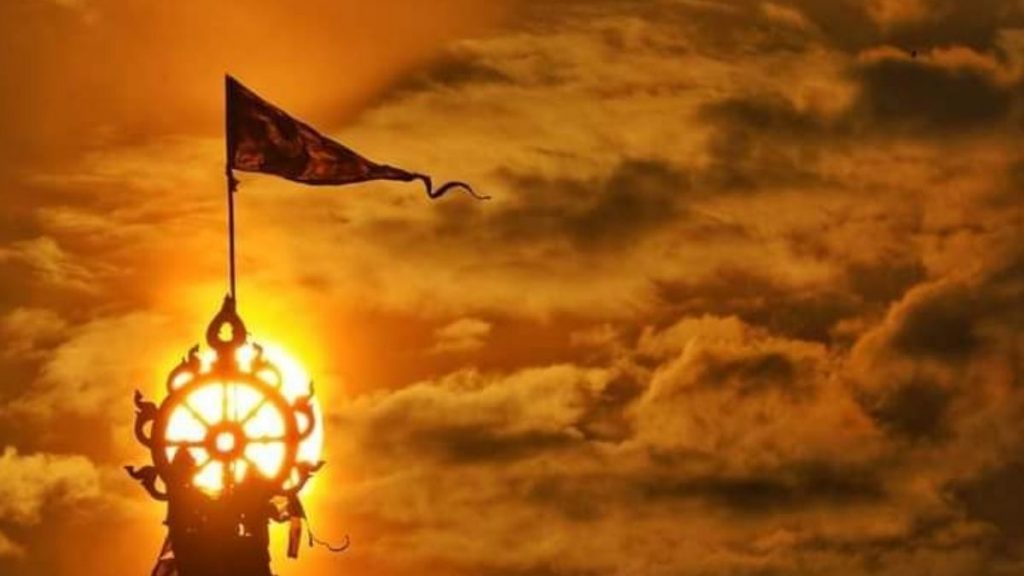New Delhi: When did it happen last? When was the last time an 8000-year-old Sanatan civilization witnessed this glory? When was the last time we saw so many Sanatan flags all over Bharat, holidays being observed in schools and offices to celebrate the “Pran Pratishtha” of a deity, millions of people watching a temple ritual on a live screen, “Akand Ramayan Path” through the length and breadth of Bharat, urban children who speak English in American accent chanting “Jai Shree Ram”, “Rath Yatra” is being carried out in the cosmopolitan Mumbai and Delhi societies. The frenzy is surreal! it’s unbelievable! Even the biggest supporter of Modi would not have imagined that someday Bharat will witness this cultural renaissance, that someday this wounded Sanatan civilization will heal this way.
So, why not celebrate this day as “World Sanatan Dharma Diwas”? Well, some Hindus might come up with an argument like “Not another festival, we already have a big list of festivals to celebrate.”
But then, there is a difference between other Hindu festivals and World Sanatan Dharma Diwas(22nd Jan).
While other Hindu festivals celebrate an idea or an event related to a particular deity, Sanatan Diwas will celebrate the civilizational independence day of Sanatanis. It’s a day when Hindus will celebrate 8000 years of Sanatan civilization. It will be a day to pay tribute to civilizational martyrs who fought and sacrificed their lives for the sake of “Dharma” and kept alive the oldest civilization of the world.
When all ancient civilizations like Mesopotamia, Egypt, Rome, Byzantine withered out with time, the only civilization to retain its continuity is the civilization of Bharat.
“World Sanatan Diwas” should work like a reminder clock for Hindus. The narrative of the struggle and sacrifice of their ancestors to retain the Sanatan civilization and identity should be deeply infused among every Hindu.
Ram Mandir is not just a temple, it’s a symbol of the second “Golden Age of India”. As per history books, the first “Golden Age” was during the Gupta dynasty.
The greatest kings of Gupta dynasty like Chandragupta 1, Chandragupta- 2, and Samudragupta resuscitated the Vedic Sanatan Hindu civilization, which was withering away with time.
The Gupta period saw the “Revival Of Hinduism.” Many Hindu epics including Ramayana and Mahabharata were anointed during this period. The period produced greatest scholars and scientists like Kalidas, Aryabhatta, Vatsayayan. Development of the nation and revival of Hinduism went hand in hand during this period.
Not only Hinduism but Guptas also patronised other religions like Buddhism. A number of stupas were built and Buddhist scholars received patronage under their rule.
Few other dynasties like Cholas and Tuluvas from southern part of Bharat also did a great work in spreading and reviving Hinduism. Then came Shivaji, one of the greatest rulers of India who ensured survival of Hinduism post-Mughal era. Shivaji is revered as a custodian of Hindu legacy in Maharashtra and rest of India. He not only saved Hindus from religious persecution but also revived Sanskrit and patronised a number of temples in its kingdom.
However, almost 400 years after the decline of Maratha empire , Hindus have remained culturally subdued. Hindus experienced symptoms of “Brain Fog”.It was fogged by the British and Mughal culture. Anti-Hindu forces ruling the nation conditioned the Hindu minds to believe that they are second class citizens in their own land. The psychological oppression of Hindus caused a deep sense of shame in Sanatan living.
No wonder it took 76 years post independence to reclaim the biggest civilisational monument of Bharat. The fight for Ram Mandir stands out as one of the most gallant tales of Hindus.
Yet, one can not say with certainty that Sanatanis have finally awakened and will remain so in coming years. Taking a closer look at the history of Hindus we find that Hindus have been very naive, gullible and vulnerable. It’s very easy to sway them away.
This generation of Sanatanis are lucky to have a leader like Narendra Modi who is a Gupta, a Chola, a Tuluva, a Chauhan, a Maratha all packed in one. But every generation might not be as lucky as the present one.
रामलला के समक्ष साष्टांग प्रणाम 🙏 pic.twitter.com/X9v3Qlrv7X
— Dr Mansukh Mandaviya (@mansukhmandviya) January 22, 2024
Therefore it’s necessary to keep reminding Hindus of their downfall, their struggle, and their rise. Every year, 22nd January should be celebrated as Sanatan Diwas to remind Hindus that generations need standing up firmly for their civilization and not be bogged down by anti-Hindu forces

